Unearthing The Sky
“We often hear the word quirky applied to contemporary poets (just glance at five random blurbs, you’re sure to find quirky), but perhaps no one writing today inhabits the word quite as fully as Bateman. The premises of her poems are apparently beamed into the atmosphere at a slant from another, logically slippery dimension—yet once you step inside, life there seems more cogent, more comprehensible, more carefully thought out than the one you’re turning her pages in.”—J. Allyn Rosser
Speculative Friction
By Claire Bateman

Editor’s Note: Claire Bateman’s recovering from a slight automotive mishap this month, so I have taken the opportunity of re-printing one of her poems, along with a commentary by fellow poet J. Allyn Rosser.
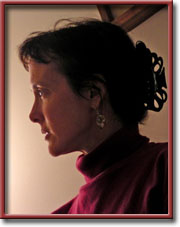
GREENVILLE South Carolina—(Weekly Hubris)—February 2018—“Somehow, Sunday seems an appropriate day to present this poem by Claire Bateman,” writes poet J. Allyn Rosser, in Best American Poetry 2017, “a fine and under-recognized poet from Greenville, South Carolina, with eight books to her name: Scape (2016); Coronology (2010); Lea
“We often hear the word quirky applied to contemporary poets (just glance at five random blurbs, you’re sure to find quirky), but perhaps no one writing today inhabits the word quite as fully as Bateman. The premises of her poems are apparently beamed into the atmosphere at a slant from another, logically slippery dimension—yet once you step inside, life there seems more cogent, more comprehensible, more carefully thought out than the one you’re turning her pages in.
“’Unearthing the Sky’” first appeared in New Ohio Review’s third issue, Spring 2008. I love the way Bateman will seize on an idea and pursue it all the way in the most natural, credible terms. The excavation draws all kinds from the woodwork—not just the genetically engineered ants that chew up the undissolved stitches, but the vandals (‘long-distance pissers’), artists, evangelists, the full spectrum of fanatics and romantics, and yes, even corporate representatives.
“She has so thoroughly (I want to say accurately) imagined the literal dilapidation of the sky, the media attention, the complicated restorative procedures and precautions and pitfalls, the responses of onlookers and the aftermath, that we readers almost forget that the broken body of the sky is figuring forth a whole cornucopia of ideals that our civilization has chosen by turns to pillage, smudge, neglect, batter. Almost, I say. What follows is a deft and intelligent poem that may well be our century’s companion poem to Hopkins’ ‘God’s Grandeur.’”

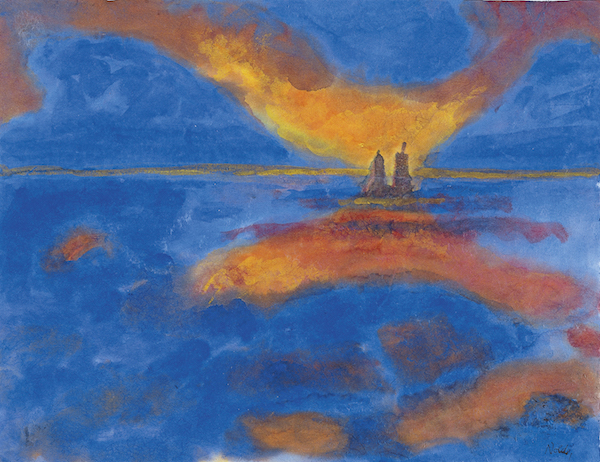
“Unearthing the Sky”
By Claire Bateman
It was filthy, of course,
with red clay streaks & embedded chips of loam,
as well as boulder-scored, chipped,
and even fractured in places,
a great big glorious suffering thing
further damaged
by the very means of its rescue,
the violence of pulleys & clamps.
Areas that had been dredged from under water
were warped & bowed
where detonation had been necessary
to dislodge them.
But there it was for everyone to behold.
Toddlers wearing tiny government-issued hard hats
were told, Look, honey, it’s the sky!
Older children were bussed on field trips to the dig site
where yellow tape kept them from the rim
so that the sign could continue to announce,
DROWNINGS AT THIS SITE: 0.
Round-the-clock floodlights discouraged those
who might have attempted to make their mark
on the sky’s broken body —
graffiti artists & would-be inscribers of the Ten Commandments,
corporate representatives & long-distance pissers,
as well as those who longed to plunge into it —
scuba divers, suicides, mystics, & lovers.
Everything was so lit-up, in fact,
that the sky would have been glad
of some darkness,
but it was not yet well enough
to generate nighttime & other weathers.
There had to be years of repair work
with everything from lasers to sandpaper,
tiny camel’s-hair brushes to welding torches.
Millions of stitches, hand-sewn
with microsuturing needles,
zigzagged across the surface
to eventually either dissolve
or be severed by army ants
genetically engineered to find them tasty.
The surgeons injected implants
of liquid mercury, black diamond plasma,
& other substances whose identities
they were not at liberty to disclose.
But at last, the sky was ready.
After all it had been through,
was it still the sky it had once been?
Not exactly, but were not the people
historically damaged as well—
and wasn’t there the matter
of loyalty?
So the various bolts, pegs, & screws
were removed,
releasing the sky at last
into its own silence.
Everyone watched as it rose,
a little shaky at first, but soon,
nearly as translucent, dizzying,
dimensionless, disturbing, etc.
as they’d anticipated.
When asked why she wept,
one woman could say only,
For something so heavy, it seemed
almost painfully light.
Abandoned, the work site still yawns
like the morning after Christmas.

Note: J. Allyn Rosser was born in Pennsylvania and attended Middlebury College in Vermont as well as the University of Pennsylvania where she earned a doctorate. Her works include Bright Moves (1990), winner of the Morse Poetry Prize; Misery Prefigured (2001), winner of the Crab Orchard Award; Foiled Again, winner of The New Criterion Poetry Prize; and Mimi’s Trapese (2014). Her poetry has also been published in such periodicals as The Atlantic Monthly, Poetry, and Ninth Letter. Rosser is a member of the faculty at Ohio University in Athens, Ohio.
![]()
To order copies of Claire Bateman’s books Scape or Coronolgy from Amazon, click on the book covers below.
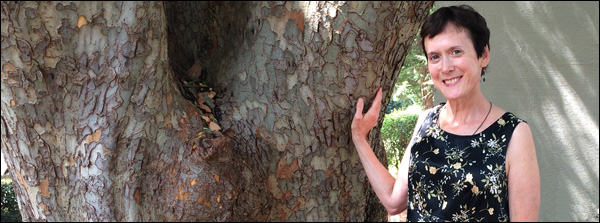
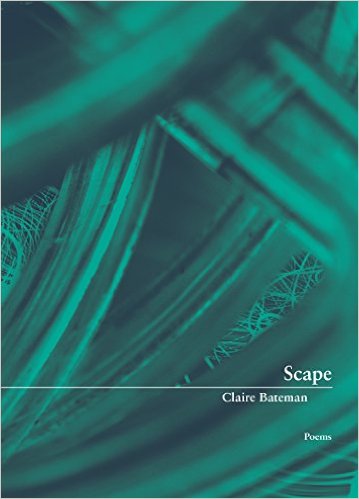
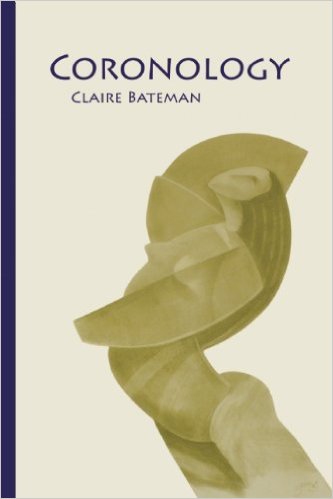
5 Comments
Will
Wonderful poem, wonderful commentary – and – quelle joie! – such a glorious lapis-lazuli painting accompanying it all!
Claire Bateman
Thank you, Will! I do adore that painting too.
Jean
Claire, I have read the poem only three times, and know I will be returning until the overwhelming issue no longer distracts me from the lovely arrangement of words, i.e., “…releasing the sky at last/into its own silence.” This is just magnificent. Thanks so much.
Claire Bateman
Many thanks, Jean! Rooting for you…
Royvia
Great post.